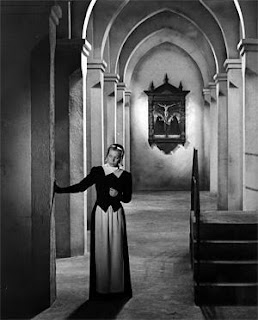The Marx Family Saga
 I was extremely impressed by Juan Goytisolo's Count Julian when I read it last year even though parts of it went over my head. The Marx Family Saga is written in a similar defiantly experimental style which is designed to test even the most adventurous reader's patience and annoy those who look for conventional narrative and characters in a novel. The narrator of the novel, who is addressed as "you" throughout, is writing a biographical novel about Marx and his wife Jenny but it is actually a hodge-podge of imagined details from Marx's daily family life, anachronisms, random sounding diatribes and hazy connections between Marxist theory and the politics of the modern world - failed states, disaster of communism, the so-called end of history and ideology, triumph of consumer capitalism etc. It is all as anarchic as it can possibly be. Naturally the author-narrator has problems with his publisher (named "Mr. Faulkner") and his hired consultant who is intent on giving him advice about how to write fiction which is to put in lots of "Facts", write psychological profiles, move people's hearts, in short write a Dickensian epic about poverty and struggle. (Dickens and Balzac, or rather their imitators, are summoned for special ridicule throughout the novel.) So that is a parallel thread that runs throughout the novel, other than the anarchic glimpses into Marx's family life.
I was extremely impressed by Juan Goytisolo's Count Julian when I read it last year even though parts of it went over my head. The Marx Family Saga is written in a similar defiantly experimental style which is designed to test even the most adventurous reader's patience and annoy those who look for conventional narrative and characters in a novel. The narrator of the novel, who is addressed as "you" throughout, is writing a biographical novel about Marx and his wife Jenny but it is actually a hodge-podge of imagined details from Marx's daily family life, anachronisms, random sounding diatribes and hazy connections between Marxist theory and the politics of the modern world - failed states, disaster of communism, the so-called end of history and ideology, triumph of consumer capitalism etc. It is all as anarchic as it can possibly be. Naturally the author-narrator has problems with his publisher (named "Mr. Faulkner") and his hired consultant who is intent on giving him advice about how to write fiction which is to put in lots of "Facts", write psychological profiles, move people's hearts, in short write a Dickensian epic about poverty and struggle. (Dickens and Balzac, or rather their imitators, are summoned for special ridicule throughout the novel.) So that is a parallel thread that runs throughout the novel, other than the anarchic glimpses into Marx's family life.
His manuscript (actually same as what we are reading) is exactly opposite of his publisher's idea of what a novel should be. As he says:
"the text you put before me is a mere succession of sketches, plans, outlines, notes, doodles and drafts
(would he use up the list from the Dictionary of Synonyms sitting on his table in order to ram his point home?)
no organising thread, no plot, the reader loses his way in a sea of contradictory data and ridiculous anachronisms! whenever he comes across a story, you make sure you knock him off course and bring him back to the start, to zero, to nothingness! do you have any objections to what I'm saying? "
or a little later giving him an example from Dickens:
"publisher: the world of David Copperfield, extreme poverty, changes of fortune, strategies for survival! collecting money, scrounging off Engels, legacies from friends and relatives, the inheritance of Carolina von Westphalen and, finally, from Marx's mother! What a merry-go-round of action, goods and chattels! a mixture of real-life dramas and coincidences to delight your readers! if you kept strictly to that you'd even have material for an excellent television adaptation, an international super co-production."
Apart from his publisher he also gets long commentaries from a feminist critic named Ms. Lewin-Strauss who subjects Marx to a critical scrutiny because of how he treated his wife and daughters and the way the narrator himself is oblivious of all the implications of the this aspect of Marx's personal history to his overall political vision. This part is really a delight to read.
A lot of it will make sense only to those who are familiar with details of Marx's life and times because most of it is a parody and "abuse" of those facts. From what I could gather the main idea of the book is that the truth of fiction is in direct opposition to the truth of facts because only in the former we can have individuality and freedom. To Goytisolo writing pseudo-Dickensian epics is a betrayal of writer's vision.
AS the excerpts above might have shown this is an unusual book even in the way it looks. There are strange typographical details, arbitrary paragraph breaks, no full-stops, no speech quotes. His sentences don't begin and they do not end either. Everything is a mess, and deliberate so. Still I missed the way he used colon in Count Julian and more importantly the breathless intensity and bitterness of that book are absent too (Mario Vargas Llosa called that book "a crime of passion") which made it a rather disappointing read. The complete review however gives it an "A+" rating which is their highest. As with Count Julian, reading it is a lot of work, specially for ill-informed readers, which might be one reason why I didn't really enjoy it.















